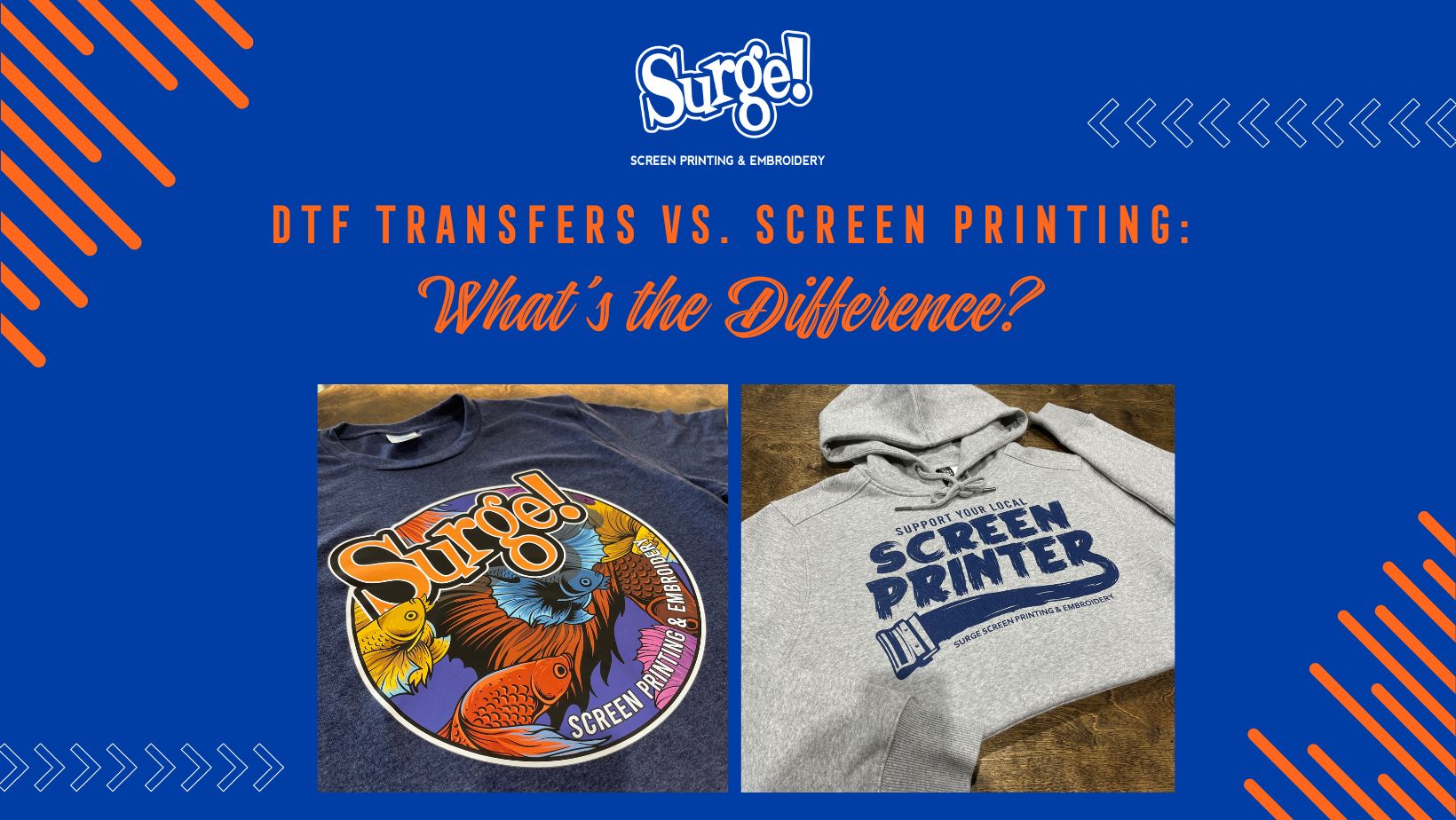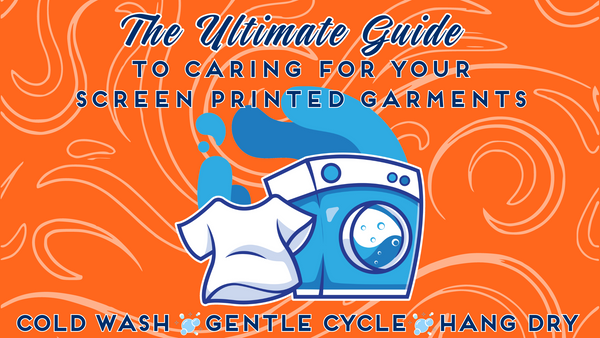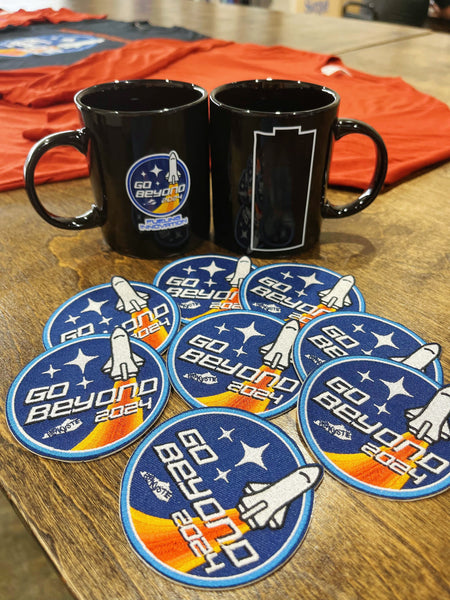We are so excited to announce our latest service offering- DTF transfers! This is an up and coming way of customizing apparel, so you may be wondering if DTF transfers are the right fit for you. Screen printing and DTF transfers offer unique advantages, making them suitable for different needs and preferences. In this blog post, we'll explore the characteristics of DTF transfers and screen printing to help you decide which method is best suited for your custom apparel needs!
What is DTF Transfers?
Direct to Film (DTF) transfers involve printing a design onto a special film and then transferring it onto fabric using heat. The process begins with printing the desired graphic onto a clear film coated with an adhesive powder. After printing, the design is transferred to the fabric through a heat press, which melts the adhesive, allowing the design to adhere to the fabric seamlessly.
Advantages of DTF Transfers:
- Versatility: DTF transfers can be applied to a wide range of fabrics and colors, including dark textiles, without requiring any changes to the design.
- Detail and Color: This method can reproduce designs with high detail and a wide spectrum of colors, including gradients and intricate patterns.
- Durability: DTF prints are known for their durability and washability, making them suitable for items that will be washed frequently.
- Efficiency for Small Orders: DTF is particularly efficient for small orders or custom designs, as it allows for easy customization without the need for setup changes.
What is Screen Printing?
Screen printing is a traditional method that involves pushing ink through a mesh screen to transfer a design onto fabric. Each color in the design requires a separate screen, making it an excellent choice for designs with limited colors. Screen printing is revered for its ability to produce vibrant, crisp designs that are highly durable.
Advantages of Screen Printing:
- Vibrancy: Screen printing inks are renowned for their vibrant, saturated colors, especially on dark fabrics.
- Texture and Feel: This method can create unique textures, as the ink is applied directly to the fabric, offering a distinctive hand feel.
- Scalability: Ideal for large orders, screen printing becomes more cost-effective at higher volumes due to the initial setup involved.
- Durability: Screen-printed designs are extremely durable and hold up well to repeated washing and wear, making them perfect for items that will see heavy use.
Choosing Between DTF Transfers and Screen Printing
When deciding between DTF transfers and screen printing, consider the following aspects of your project:
- Design Complexity: If your design involves a wide range of colors or intricate details, DTF transfers might be the better option. For bold designs with fewer colors, screen printing could be more suitable.
- Fabric Type and Color: Both methods work on various fabrics, but DTF transfers offer more versatility for different fabric types and colors, including dark textiles.
- Order Size: For small, customized orders, DTF transfers are more practical. Screen printing, on the other hand, is more cost-effective for larger batch orders.
- Durability and Usage: Both methods produce durable designs, but if you're looking for specific textures or the classic feel of screen printing, it might be the preferred choice.
In summary, both DTF transfers and screen printing offer unique benefits that cater to different needs. By considering your project's specific requirements—such as design complexity, fabric choice, order size, and durability—you can make an informed decision on which method will best bring your vision to life. Whether you choose the versatility and color range of DTF transfers or the vibrancy and scalability of screen printing, both methods can produce high-quality, durable designs that meet your expectations. No matter your decision, we’re here to deliver Your Next Favorite Shirt!
Want to explore your options, and start an order on custom apparel for your business? Click here to get started!






Casey McKean
Author